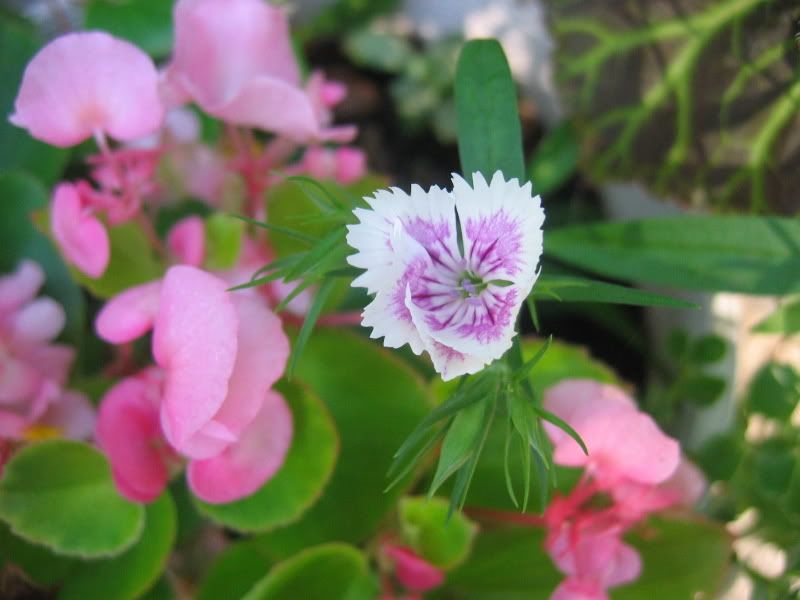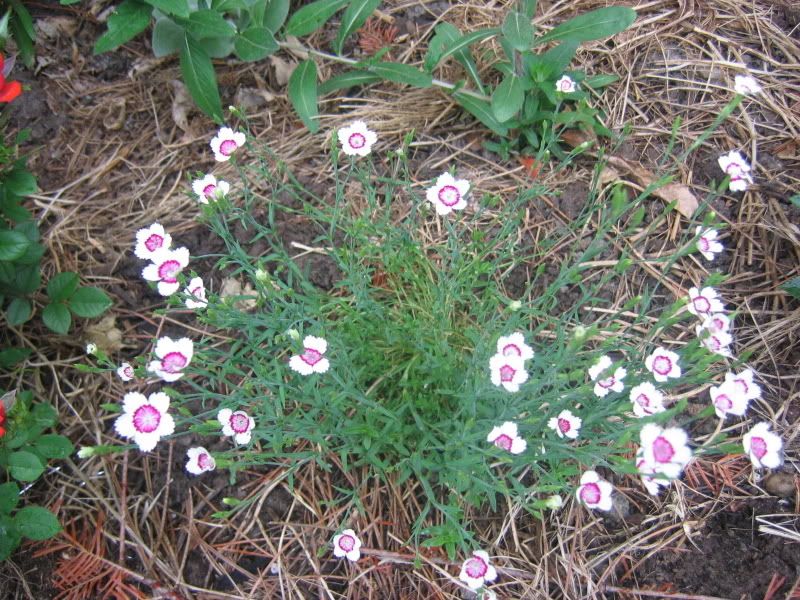Pretty in pink
Take out your pinking shears, ladies! And men (and other non-sewers), take a look. Pinking shears are scissors with zigzag blades, that cut cloth to a - gasp! - zigzag edge. This lessens fraying, in case anybody was wondering why we bother. So when somebody many years back was admiring the flowers of the Dianthus genus with their highly serrated petals, it was a natural to label them "pinks". One thing led to another, as often happens, and sooner or later the name for these charming little flowers was popping up on whatever their equivalent of Crayola crayons was. And so the word "pink" migrated from scissors to flowers to colour. (The French also named the colour in question after a flower - "rose".)
So when somebody many years back was admiring the flowers of the Dianthus genus with their highly serrated petals, it was a natural to label them "pinks". One thing led to another, as often happens, and sooner or later the name for these charming little flowers was popping up on whatever their equivalent of Crayola crayons was. And so the word "pink" migrated from scissors to flowers to colour. (The French also named the colour in question after a flower - "rose".)
Now, not all pinks are actually pink, but most of them are, at least in part. They run the range from white to crimson, with pretty well all the shades in between. Some crazed hybridizer some day will undoubtedly develop an orange pink which will become the must-have plant of the year until everyone discovers that it can't survive a winter in Georgia, let alone Saskatchewan. Sound familiar?
The rest of us are just happy with the ones we have. I only have two kinds in my garden at present, with a third unlikely to survive its transplantation just prior to the full fury of July heat. (Never look a gift plant in the mouth, I always say.) My Chinese pinks are officially annuals, but they will pull through a winter rather nicely if given some protection. Mine even made a desperate attempt to come back for a third year this spring, but they hadn't been sheltered at all and couldn't make it through the vagaries of spring weather in their weakened state. Fortunately my deadheading had been a little sloppy last year, so their children are now growing happily in my pots.
Dianthus barbatus or Sweet Williams are the only species in the genus that are officially biennials. William may be sweet, but he doesn't think much of officialdom and will cheerfully come back a third or fourth or fifth year if he approves of his living conditions. I finally pulled mine out at the last house, because it was mostly white and I needed more colour. William wasn't volunteering to bow out on his own. I put in a little clump of the Arctic Fire variety of Dianthus deltoides this year. It is a perennial that will come true to seed, but will also bloom itself to death if you let it go. So I sheared mine back after collecting a few seeds, and it is still throwing up the odd little bloom to thank me. It is said to spread well without becoming invasive. I hope that this is true, because its tiny little flowers create a better effect en masse and they've kind of grown on me.
I put in a little clump of the Arctic Fire variety of Dianthus deltoides this year. It is a perennial that will come true to seed, but will also bloom itself to death if you let it go. So I sheared mine back after collecting a few seeds, and it is still throwing up the odd little bloom to thank me. It is said to spread well without becoming invasive. I hope that this is true, because its tiny little flowers create a better effect en masse and they've kind of grown on me.
All pinks prefer full sun, but many will get by very happily with somewhat less and sometimes even considerably less. They are delightful, no fuss plants, that seem almost impervious to pests and disease. You can draw your own conclusions, but mine have a standing invitation to return, even if officialdom says their lease has expired.
Technorati tags: Pinks, Dianthus


2 comments:
So, now we know why pinks are called pinks.
But why are pinking shears named so?
[Middle English pingen, pinken, to push, prick, from Old English pyngan, from Latin pungere. See peuk- in Indo-European Roots.]
From http://www.dictionary.com. It seems to share etymological roots with words such as puncture, and hole-punch.
Post a Comment